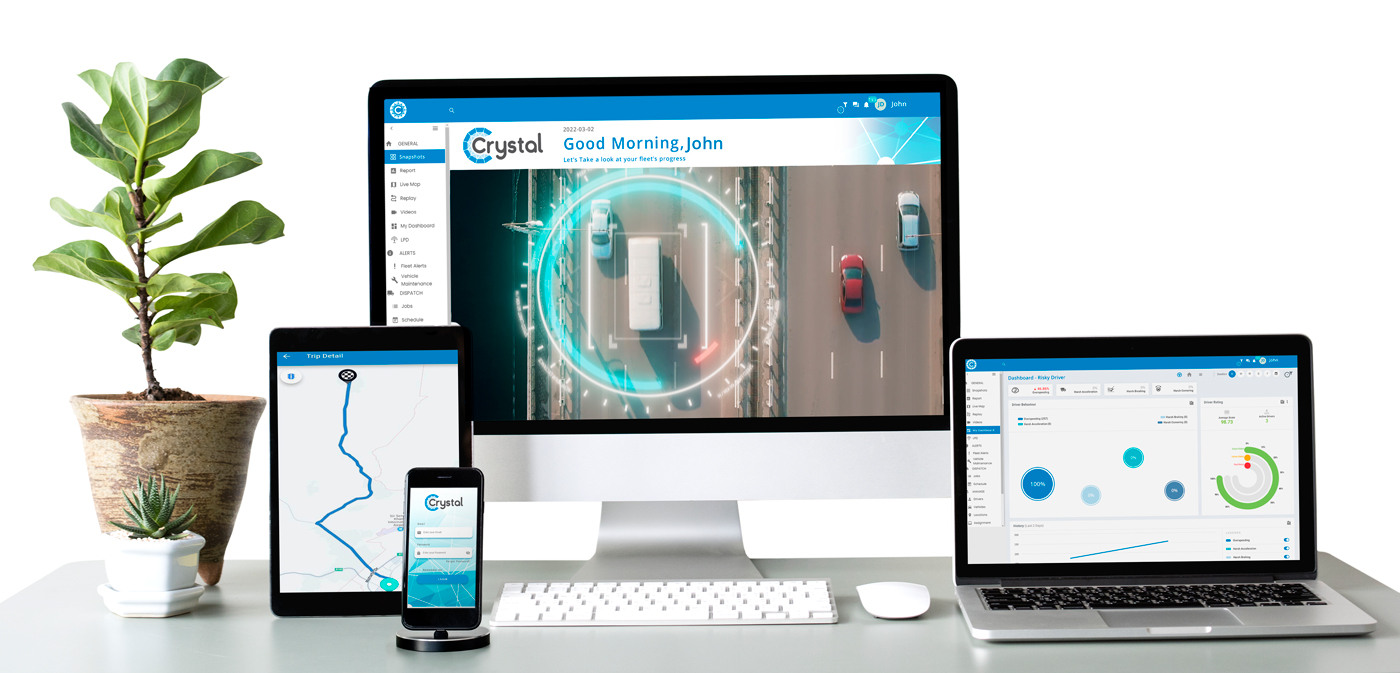Understanding the importance of fleet management and telematics
Understanding the importance of fleet management and telematics
Every kilometre covered by vehicles in a fleet costs money and represents risk. Managing the costs and this risk comes down to how well the vehicle and its driver are controlled.
The management of movable assets is generally the responsibility of the owner of the business or, in the case of larger operations, a dedicated fleet manager. However, fleet management is a mammoth task that entails everything from ensuring vehicles are roadworthy to the optimisation of loads, as well as financial and human resources management. The use of a telematics and fleet management system allows for the simplified control and analysis of the performance of both drivers and vehicles, down to the last detail.
Vehicle telematics began with the ability to track vehicles and has progressed at a rapid rate, to a point where vehicles can now be traced in real-time via the cell phone in your pocket. In addition to knowing the precise location of assets, fleet managers have access to a myriad of information, ranging from speed to fuel consumption.
The insight gained from data can be used to improve route scheduling, fuel consumption, driver performance, and communication – critical factors that need to be managed in order to curtail both risk and costs.
Throughout its 35-year history, Ctrack has been at the forefront of vehicle telematics and fleet management. Its research and development laboratory, located just outside Pretoria, has been responsible for many of the ideas and solutions that are now commonplace across this industry.
There is an old cliché: “To measure is to know.” This is equally relevant to the management of movable assets. Accurate data provides hindsight, insight, and foresight. It is not possible to properly run a fleet in today’s fast-paced world without a dedicated fleet management partner.
The way vehicles are used has a direct influence on costs. The advantages of a properly managed fleet include the upskilling of driver competency, the elimination of dangerous driving habits, a reduction of insurance claims, improved productivity, and overall safer driving. Fleet management systems are also vital for managing aspects such as third-party claim validation and load security.

Ctrack recently launched a new fleet management platform called Crystal. This platform once again raises the bar in the fleet management industry by offering new features such as a cloud-based platform, a real-time interface, and interactive functionality. Crystal takes the guesswork out of fleet management by presenting a wealth of data in a way that is easy to interpret via improved management reports and dashboards, snapshots, and client-configurable fleet alerts.
Crystal’s customisable user platform allows fleet managers to extrapolate all the data they need, in a way that makes sense to them and their business.
What truly makes Ctrack unique is the flexibility of its product offering and how data can be viewed. The company prides itself on developing solutions for a variety of industries, from trucking and mining to agriculture and construction.
Ctrack’s wide range of solutions cater for fleets from two to 2 000 vehicles. These solutions offer precise data on a wide variety of parameters thanks to data collection devices that include cameras, breathalysers, and the ability to read data from the vehicles’ own computer systems via CAN bus. All these inputs help paint an accurate picture of exactly what a driver and vehicle were doing, as well as when and why.
While Ctrack has gone to great lengths to simplify fleet management, it also offers a bureau service. The Ctrack Bureau Service enables customers to pair Ctrack’s world-class telematics technology with an expert fleet manager at minimal cost.
Proper telematics and fleet management are no longer reserved for big companies with large fleets. Ctrack offers solutions that will address the needs and budget of any fleet size with the same results in terms of cost savings and risk management, in a manner that is easy to implement and simple to use and manage on a daily basis.
Published by
Focus on Transport
focusmagsa




